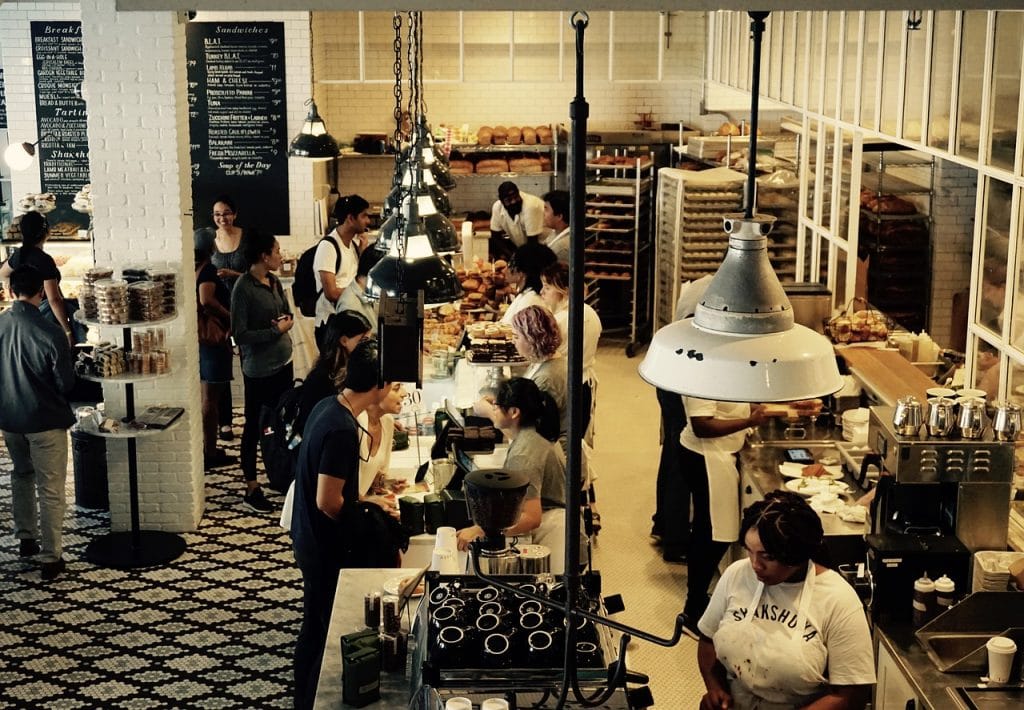
Not having a business plan in place before launching their cafe or restaurant business is one of the most common mistakes first-time business owners make in Malaysia.
Instead, they prefer building their cafe or restaurant on the fly, reacting to their business needs as they pop up.
While this may work, sometimes it can result in emergencies when running the business, such as suddenly realizing you haven’t prepared enough money for an important expense, or that you have overlooked a crucial part of your market research.
This is why we recommend every aspiring FnB entrepreneur to spend some time creating a business plan for their cafe or restaurant before launching it.
A business plan will give you an overview of your entire business, industry, market, competition as well as your cash flow, to name a few. While you can’t be prepared for every single circumstance, you’ll definitely be better prepared compared to not having one.
As they always say, ‘When you fail to plan, you plan to fail.’
Other than providing good grounds of preparation, a business plan is also required if you are thinking of raising money to kickstart or grow your business.
If you want to be better prepared for your new cafe or restaurant business or want to show your potential investors why your new FnB business is a good investment, you’re in luck: we’ve prepared this quick guide to help you get started.
In this guide, we will show you how you can craft a business plan that covers all the key areas of an FnB business. This is an easy to follow guide so even if you’ve never created a business plan before, you’ll be able to follow through.
By the end of this post, we hope you will know enough about business plans to go about creating your first one!
What Makes a Good FnB Business Plan: Expert Tips

Before we take a look at what exactly to include inside your business plan, here are some tips to remember when writing yours to make it a better one:
1. Know who your audience is and write for them
Crafting a business plan for your own team and for investors will be different. It’s worth thinking from your reader’s perspective when preparing the business plan. This will give you an idea of what matters to them most and what may require more explanation.
2. Use simple, easy to understand words
As with any kind of writing, try to use simple words and avoid jargons where a simpler word can explain the same thing.
For instance, while you may be an expert in the food or drinks you are making, the people reading your business plan may not be. Consider providing explanations for things your audience may not know about.
3. Yet, keep it as short as possible
While your business plan is meant to be all-inclusive, it’s not meant to be too long. The goal isn’t to produce a 100-page document, but to use just enough pages to talk about the key areas. So, pack as much as you need to into your business plan in as little pages as possible.
4. Keep the formatting professional
A business plan is a professional document and should be presented that way. So unless you are the only person reading the business plan, it’s a good idea to keep the business plan well-formatted and professional.
What to Include in Your FnB Business Plan: Key Components

Now that you have an idea of how to write and style your business plan, let’s take a closer look at what exactly you need to include inside one. Do note that while the executive summary is usually placed first, the order of the rest of the sections may vary:
1. Executive Summary
Your executive summary is the short version of your entire business plan, highlighting the parts which your reader may find most important. As such, you’ll likely be writing this section last, when all the other sections are complete.
2. Industry Overview
The Industry Overview is where you help your reader understand the major trends in your industry, market size major players and opportunities in the FnB niche you’re interested to start your business in.
This will provide them a bird’s eye view on the industry as a whole, the potential revenues and understand where your business might fit into it.
3. Market Research
In the Market Research section, you will be analyzing the current behavior (spending power, habits, and interests) and demographics of your potential customers and using that information to show how they might respond favorably to your business.
4. Competition Analysis
Here, you discuss who your main competitors are, what they are doing and how you intend to differentiate yourself from them and win in the race. You can analyze your competition for things like product and service offerings, location, prices, and promotions.
5. Products and Services Offered
Let your readers know more about the types of products and services you intend to offer, along with the price points you intend to sell them at in this section.
If you can afford it, you can even include mockups of your products including the packaging. This will give your reader an image of how your products might look once your business is live.
6. Key People
No business plan is complete without information about the key people involved in your business. This is where you go into detail about the experience and qualifications of your management team, showing your reader why they are the best people to run your business.
If you have a board, you’ll need to include their profiles here also.
7. Operating Plan
An Operating Plan will detail the processes you need to run on a day to day basis. This will include:
- Where you will get your raw supplies from
- Number and type of employees needed
- Operating cash flow, and
- Details on each process in the operations
Depending on the nature of your business, you may even include manufacturing processes also.
8. Layout Plan
Your layout plan is basically a blueprint of how and where your tables and chairs, door, windows, kitchen, and toilet will be placed in your cafe or restaurant. This will give your reader an idea of how your commercial space will be used and if it is used in the best way possible.
9. Marketing Plan
A Marketing Plan will show your readers how you intend to bring attention to your business using marketing channels and what your plan and budget is like for each channel. Having a solid marketing plan in place can give your readers assurance that you’ll be able to raise awareness of your business and bring in customers from Day 1.
10. Financial Plan
Finally, you’ll need to show your Financial Plan in your business plan. This will give your readers an overview of how you will be funding your business, how much money you expect to make, as well as your day to day expenses.
Usually, you’ll need to prepare and include:
- Profit and loss statement
- Income statement
- Cash flow projection
If you’ve never prepared these documents before, not to worry. There are many templates available online that you can just edit and use.
11. Appendices
Any additional documents you think will support your overall business plan can be included here.
Conclusion
A business plan can be helpful for any new FnB business, whether it is to plan the business, or as a means of showing potential investors why your FnB business is worth investing in.
While this guide is only a starting point, we hope it has provided you the kickstart to start creating a business plan for your new FnB business.
Did you find this guide useful? Let us know in the comments section below!





